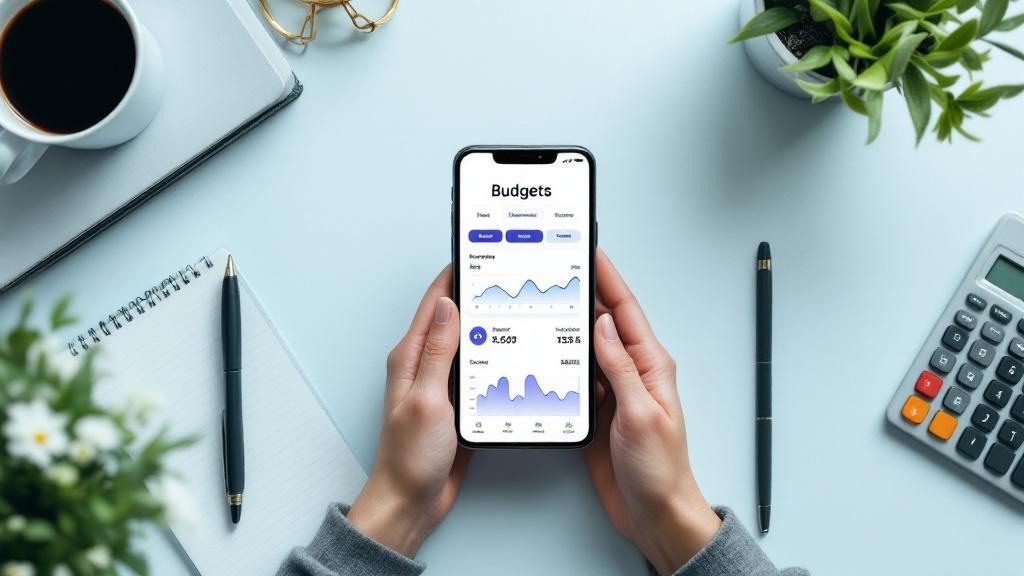Setting a monthly budget is one of the most important steps towards achieving financial stability and success. Whether you’re saving for a big purchase, paying off debt, or simply trying to live within your means, budgeting helps you track your income, expenses, and savings goals. In this blog post, we’ll walk through the essential tips for setting a monthly budget, providing real-life examples and actionable steps.
Let’s dive into the art of budgeting and learn how you can effectively create a budget that works for you!
Why is Budgeting Important?
Before jumping into the details, let’s first understand why budgeting is essential. Simply put, budgeting is a tool that helps you manage your money by keeping track of your income and expenses. By setting a monthly budget, you can:
Control your spending: Track where your money is going each month.
Save for future goals: Set aside money for savings, investment, and emergency funds.
Avoid debt: Stay on top of your bills and avoid unnecessary debt.
Prepare for unexpected expenses: Build a cushion for emergencies like medical bills or car repairs.
How to Set a Monthly Budget: Step-by-Step Tips
Let’s break down the process of setting a monthly budget into simple, actionable steps that anyone can follow.
Step 1: Calculate Your Income
The first step in setting a monthly budget is to know how much money you have coming in. This includes your salary, bonuses, side hustle income, and any other sources of income.
Example:
If you earn ₹50,000 from your job, ₹5,000 from a freelance gig, and ₹2,000 in passive income, your total monthly income is ₹57,000.
It’s important to be realistic about your income and use an average if your income fluctuates (e.g., in cases of commission-based work).
Step 2: List All Monthly Expenses
Next, you’ll need to account for all your regular monthly expenses. These can be divided into fixed and variable categories:
Fixed Expenses: These are the same amount every month (e.g., rent, utilities, loan payments).
Variable Expenses: These may change from month to month (e.g., groceries, entertainment, and personal spending).
Example of Fixed Expenses:
Rent: ₹20,000
Internet: ₹1,500
Loan Repayment: ₹5,000
Insurance: ₹3,000
Example of Variable Expenses:
Groceries: ₹5,000
Transportation: ₹2,000
Entertainment: ₹2,500
By breaking down your expenses into these two categories, you’ll get a clearer picture of your financial obligations.
Step 3: Set Your Savings and Investment Goals
A key part of budgeting for expenses is also budgeting for your future. This is where you decide how much money you want to save each month and what goals you are saving for.
Emergency Fund: Aim for at least 3-6 months’ worth of living expenses.
Retirement: Consider contributing to a retirement fund.
Short-Term Goals: Saving for vacations, large purchases, or home improvements.
Long-Term Goals: Buying a house, children’s education, etc.
Example:
If you want to save ₹10,000 per month towards an emergency fund, factor this amount into your budget.
Step 4: Allocate Your Budget Categories
Once you’ve accounted for your income, expenses, and savings goals, it’s time to allocate your budget into categories. The 50/30/20 rule is a popular approach:
50% for Needs: These are essential expenses such as rent, utilities, food, and transportation.
30% for Wants: Discretionary spending like dining out, entertainment, and hobbies.
20% for Savings & Debt Repayment: Allocate money towards savings, investments, and paying off any outstanding debt.
Example:
If your monthly income is ₹57,000, your budget might look like this:
50% for Needs (₹28,500): Rent, utilities, groceries, etc.
30% for Wants (₹17,100): Dining, hobbies, subscriptions, etc.
20% for Savings (₹11,400): Emergency fund, investments, and debt repayment.
Step 5: Track Your Spending
Tracking your spending is essential to ensure you’re sticking to your budget. You can use various methods, such as:
Manual Tracking: Use a spreadsheet or pen and paper to log your expenses.
Budgeting Apps: There are several mobile apps (like Mint, YNAB, or Spendee) that can track your expenses automatically by linking to your bank account.
Example:
By reviewing your expenses at the end of each week, you can identify areas where you overspent and adjust accordingly.
Step 6: Review and Adjust Your Budget
Budgets are not set in stone. Life happens, and sometimes you’ll need to make adjustments. It’s important to review your budget monthly to see if you need to:
Cut down on unnecessary expenses (e.g., subscriptions or dining out).
Increase savings if your income grows.
Shift money around to ensure you’re staying on track with your financial goals.
Tips for Effective Budgeting
To make your budgeting process even smoother, here are some personal budget tips that can help:
Start Small: If you’re new to budgeting, start with just the basics (income, fixed expenses, savings). Gradually add more details.
Be Realistic: Don’t set overly strict limits, especially with discretionary spending. Give yourself some flexibility to enjoy life while still sticking to your goals.
Use Budgeting Tools: Take advantage of online budgeting tools and apps to make the process easier. Popular apps include Mint, PocketGuard, and Wally.
Automate Savings: Set up automatic transfers to your savings account to ensure you’re saving before you spend.
Set Financial Priorities: Focus on your highest priorities first—whether it’s paying off debt, building savings, or investing for the future.
Common Monthly Budget Categories
For a well-rounded budget, you’ll want to divide your expenses into categories. Some of the most common categories include:
Housing: Rent or mortgage, utilities, home insurance.
Transportation: Car payment, gas, insurance, public transport.
Groceries: Food, household items.
Entertainment: Dining out, subscriptions, entertainment.
Insurance: Health, auto, life insurance.
Savings & Investments: Retirement accounts, emergency fund, other savings.
Debt Repayment: Credit card payments, student loans, personal loans.
FAQs: Budgeting for Success
How do I create a monthly budget with irregular income?
For irregular income, use the average of your monthly earnings from the past 6-12 months. You may also want to focus more on the essentials and adjust discretionary spending based on your fluctuating income.What are some budgeting tools for beginners?
Apps like Mint, YNAB (You Need A Budget), and EveryDollar are great for beginners. They help track expenses and keep you on top of your financial goals.How do I stick to my monthly budget?
To stick to your budget, try automating your savings, tracking expenses regularly, and adjusting your budget if you find areas where you consistently overspend.What is the 50/30/20 rule in budgeting?
The 50/30/20 rule is a simple budgeting strategy: 50% of your income goes toward needs, 30% toward wants, and 20% toward savings and debt repayment.How can I manage my monthly spending better?
Use income and expense tracking tools, set limits on discretionary spending, and review your spending habits regularly to identify areas for improvement.








Comments (0)